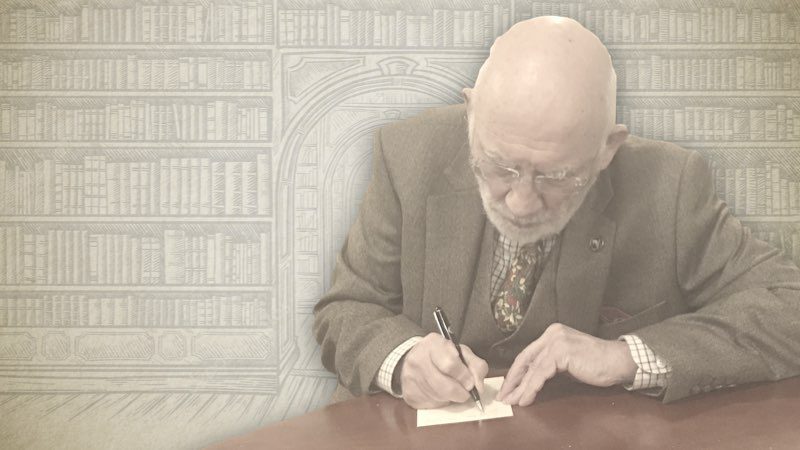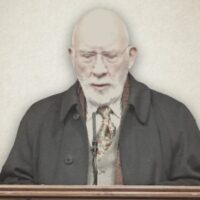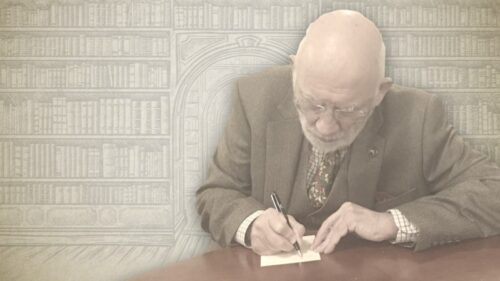
The Works of Andrew Fuller with a Biography (Part 1)
The Works of Andrew Fuller with a Biography
by the Editor Andrew Gunten Fuller
A Banner of Truth Trust Facsimile Reprint
Part One
On the cover of the new BOT facsimile of Fuller’s works, we find the title and the name Michael A. G. Haykin. Prof. Haykin, however, neither edited the work nor provided the introductory biography. This was done by Andrew Fuller’s son, Andrew Gunten Fuller in 1831. Of Fuller Jr.’s efforts, Spurgeon said that he had used much moss to cover his father’s thorns. What then has Michel Haykin to do with this volume? Very little, apart from lending his name to the cover. True, Prof. Haykin has written a few opening words entitled Andrew Fuller: Life and Legacy A Brief Overview but as an Introduction it could not be briefer. If Haykin had used the small print of the rest of the book, his ‘Introduction’ would have covered almost three pages. In the larger font he uses for himself, it covers less than five. What a disappointment! Prof. Haykin is a scholar so I had hoped that he would approach his subject in a scholarly way. Fuller’s early 19th cent. editors had neither the training nor the facilities to do the necessary research on Fuller and merely put down the obituary thoughts of close friends and family members when a more critical evaluation would have been out of place. So, too, Fuller’s works have, on the whole, not been reset or altered in their layout since the early 19th cent.. The latest reprints from Sprinkler Publications and the BOT represent collections in 19th century garb in a tiny print which is very tiring to read. The incomplete essays have been most carelessly put together so that it is impossible to trace the major stages in Fuller’s theological development in them. The BOT’s version has been crying out for revision for well over a hundred years.
So what did I miss in this mini-introduction? I missed hard, studious work. Fullerism has ousted Reformed thinking in many of our former Reformed churches, so one would think that any Christian scholar on issuing a reprint of Fuller would evaluate this modern impact and give a critical analysis of Fuller’s life and legacy. A serious reader would like to know how Fuller came to write what he did in the way he did. As there is nothing whatsoever new in what Haykin writes, he might just as well have taken any one of many pro-Fullerite introductions from the past and reprinted that instead and not taken up so much space in the BOT marketing campaign with his name. In modern marketing, of course, names are more important than content. Indeed, with all the criticism that sound Christians of Fuller’s day heaped on Fuller and all the trouble Fullerism is causing in breaking up the churches today, one can only say that Haykin has merely re-whitewashed Fuller’s sepulchre with the palest watered-down tincture imaginable. Though this certainly reflects Fuller’s equally watered-down gospel, Haykin’s wishy-washy approach will hardly help the BOT’s campaign to replace living Reformed theology with dead Fullerism.
Apart from hard work and careful study, I also missed a good deal of material which none of Fuller’s biographers have hitherto supplied. We need studies-in-depth of why Fuller stayed so long as a member and so long as a pastor of an alleged Johnsonian, Hyper-Calvinist church, in which, by the way, he found conversion, and why he suffered for the rest of his life under a love-hatred of the doctrines he had acquired at Soham? Why, in spite of all his fickle coquetry with nature-based religion, New Divinity, Baxterianism, Arminianism, Sandemanism, Socinianism and Scepticism did he carry elements of Hyper-Calvinism through with him to the grave? Why too, are modern ministers under the influence of the Banner of Truth’s Hyper-Calvinism insisting on only preaching the full gospel to the already saved and are forcing on lost sinners a mumbo-jumbo of natural religion, so-called ‘common grace’ and an appeal to man’s natural responsibilities to exercise duty faith which are rigid barriers to belief? Why are they so Antinomian in splitting up the eternal law of God arbitrarily into ‘carnal’ and ‘moral’ parts, yet Neonomian in up-grading a narrow choice of ethical rules to make them their sole guide to faith and obedience? Brother Haykin, where are your answers?
I would like to see an analysis of Fuller’s ever changing theology and have his works rearranged to demonstrate this chronological decline. Why, according to Fullerites, was Fuller at his most ‘spiritual’ when he emphasised the synonymous nature of ‘morality’ and ‘spirituality’ through allegedly attaining to ‘the nature and fitness of things’? Why do modern Fullerites claim allegiance to Fuller on points which Fuller had long abandoned as he admitted in later works? These Fullerite followers teach that we must accept such paradoxes as being irreconcilable as they demonstrate the two aspects of the truth. How naïve can one get? Haykin and the BOT, too, have a duty and responsibility to pastor these deceived lambs as we do at New Focus. As the Banner of Truth is now finally lowered, the New Focus banner still flies faithfully under the slogan That the Purpose of God According to Election Might Stand. May we and our readers be protected by God’s grace from also going the way of all flesh.
In a profitable, instructive introduction, Prof. Haykin ought to examine why Fuller who admitted that he had radically changed his mind numerous times concerning the atonement, imputation, justification and righteousness, still insisted on his old works being reprinted as he had written them. The Gospel Worthy of All Acceptation is a classic example of Fuller’s low view of revealed religion and his love for paradoxes to be solved by the reasonableness of Natural Law. There is no hope for sinners in it. It appears from reading Fuller’s Change of Sentiments that on writing the first edition of The Gospel Worthy, he merely stressed that the atonement was ‘sufficient for all mankind’.[1. BOT. p. 322.] He then discovered that in the Scriptures Christ had ‘an absolute and determined design in his death to save some of the human race and not others’. So what did Fuller do? He left his religion of Natural Law unaltered in The Gospel Worthy and merely added his religion of design to ‘complete’ his gospel of paradox. The BOT have claimed for some time now that this muddle-brained concoction is the only gospel worth preaching. Haykin skips over this difficulty by saying that in the second edition ‘the work’s major theme remained unaltered.’ He then argues that ‘this epoch-making book sought to be faithful to the central emphasis of historic Calvinism’, which he defines as preaching man’s ‘universal obligations’. Haykin’s unfounded opinion that Fuller’s personal syncretism is ‘epoch-making’ must be the overstatement of the year. The idea of his replacing the Reformed faith with Fuller’s appeal to universal obligations draws the curtains over the BOT’s former claim to ‘historic Calvinism’. In his Change of Sentiments, Fuller also confesses that he altered his mind several times after writing A Reply to Philanthropos. This work is a favourite with most lovers of Fuller as one can pick out teachings from it which will please all sides including utter Sceptics and Hyper-Calvinists. Nevertheless, Fuller insisted that he would not alter the work in future editions.
Haykin speaks of Fuller’s missionary theology. Here a brief study of this subject would have been helpful as it is here that Fuller differed mostly from Carey who never mixed his missionary strategy with severe right-wing colonial, political thinking as did Fuller. So, too, Haykin ought to examine the ‘holding the rope’ theory of Fullerites which has reached mythological proportions. The Baptist Missionary Society were prepared to cut the rope and abandon Carey hardly a year after Carey reached India. Fuller criticised the young work at Serampore at times so harshly that Carey had to tell him that he was ‘killing’ such as Fountain, an excellent missionary. So, too, Ward and Marshman were greatly grieved to find that Fuller was sabotaging their church planting. Fuller demanded Society-controlled British Baptist churches only and not indigenous churches with non-denominational names. Has Haykin forgotten or never read that Ryland, whom Haykin sees as holding the rope as long as Carey lived, was a chief rope-cutter? Carey had to tell Ryland that his enormous interference in the practice of the Mission showed he was acting ‘evilly’.
Another point Haykin could have taken up was the expansion myth concerning the alleged vast increase of Fullerite churches through Fuller’s ministry. He tells us that Fuller’s church doubled its membership from 1782-1815 so that it reached 175 members. As Fuller says the average membership in his churches were 70, how few were then in the other churches? Contemporaries of Fuller’s who were certainly not in agreement with him had memberships of many hundreds and hearers numbering several thousands. Indeed, the majority of churches in Fuller’s county never fell for his theological dualism and even Arch-Fullerite Robert Oliver admits that many members of Fuller’s Association disagreed with him and split-offs occurred. John Stevens, who had a church well over twice the size of Fuller’s points out that the Fullerite destruction of churches continued on a regular basis. We also note that John Ryland Sr. extended the membership of his Northampton church seven-fold and yet his son and successor, Dr John Ryland could not keep the high number of members and his church shrunk at the same rate as Ryland gave up his father’s doctrines. Haykin mentions that Fuller abandoned his flock leaving them shepherdless for months on end. This is a strange way of fostering church expansion.
A pastoral interest of mine would be to know why Fuller, who had next to no formal education himself, was so critical, mean and arrogant against people whom he felt were ‘uneducated’? Was this merely his own way of protecting himself from similar criticism?
So much for what I missed in Haykin’s support of the BOT’s new downgrade. In the next issue of New Focus, I shall examine the doctrines exhibited in the BOT’s collection of Fuller’s works, establishing my claim that the new Banner flown over Edinburgh proclaims that they are now aiders and abetters of Ichabod.
George Ella
——————————————
George M. Ella is a historian, author and biographer. His writings may be accessed at the online archived, ”Biographia Evangelica”.
George M. Ella, born February 1939 in Yorkshire, England, has lived most of his life on the European Continent. He is a retired Senior Civil Servant formerly employed in teaching, post-graduate teacher-training, chairing examination boards and curricula work. He holds degrees from London, Hull, Uppsala, Essen, Duisburg and Marburg universities with doctorates in English Literature and Theology. Dr. Ella has written regularly since the seventies for a number of magazines and newspapers and published numerous books on Church History, including biographies of William Cowper, William Huntington, James Hervey, John Gill, Augustus Montague Toplady, Isaac McCoy and Henry Bullinger besides works on doctrine and education. He is currently finishing the third volume of his series 'Mountain Movers'; a biography of John Durie; a work on Law and Gospel and further study material for the Martin Bucer Seminar. Dr. Ella is still internationally active as a lecturer and is a Vice-President of the Protestant Reformation Society. He is keenly interested in missionary work and has written on the spread of the Gospel amongst the Same people of Lapland, the people of India and the Native Americans. This present volume follows Dr. Ella's 'The Covenant of Grace and Christian Baptism', also published by the Martin Bucer Seminar. George Ella is married to Erika Ella, nee Fleischman, a former government administrator, and they have two sons Mark (41), Director of a Polytechnic College in Bremerhaven and Robin (39), Leading Senior Physician in a newly-built Geriatric and Psychiatric clinic in Dessau.
George Ella on Doctrinal Matters
George Ella's Biographical Sketches




